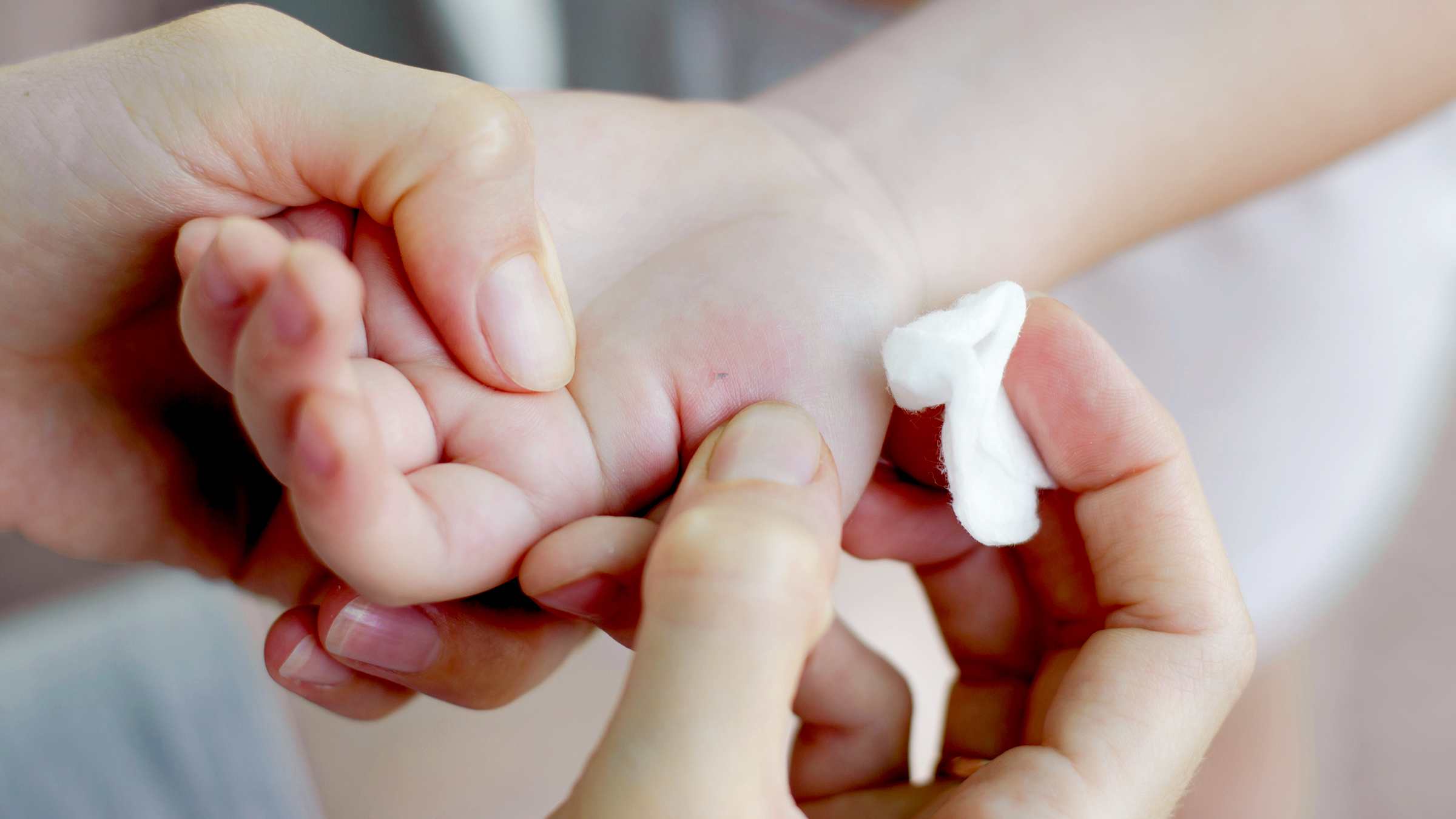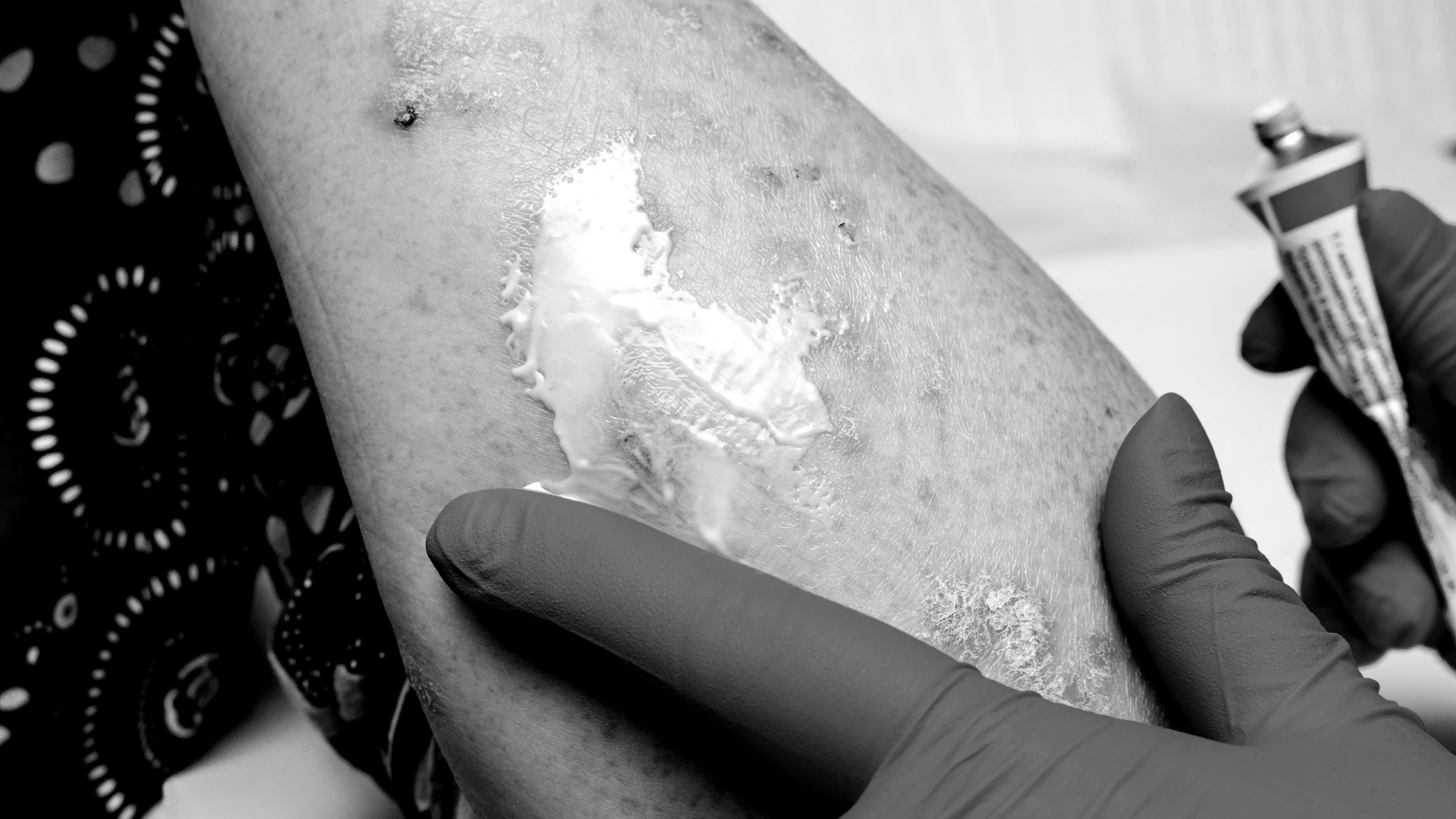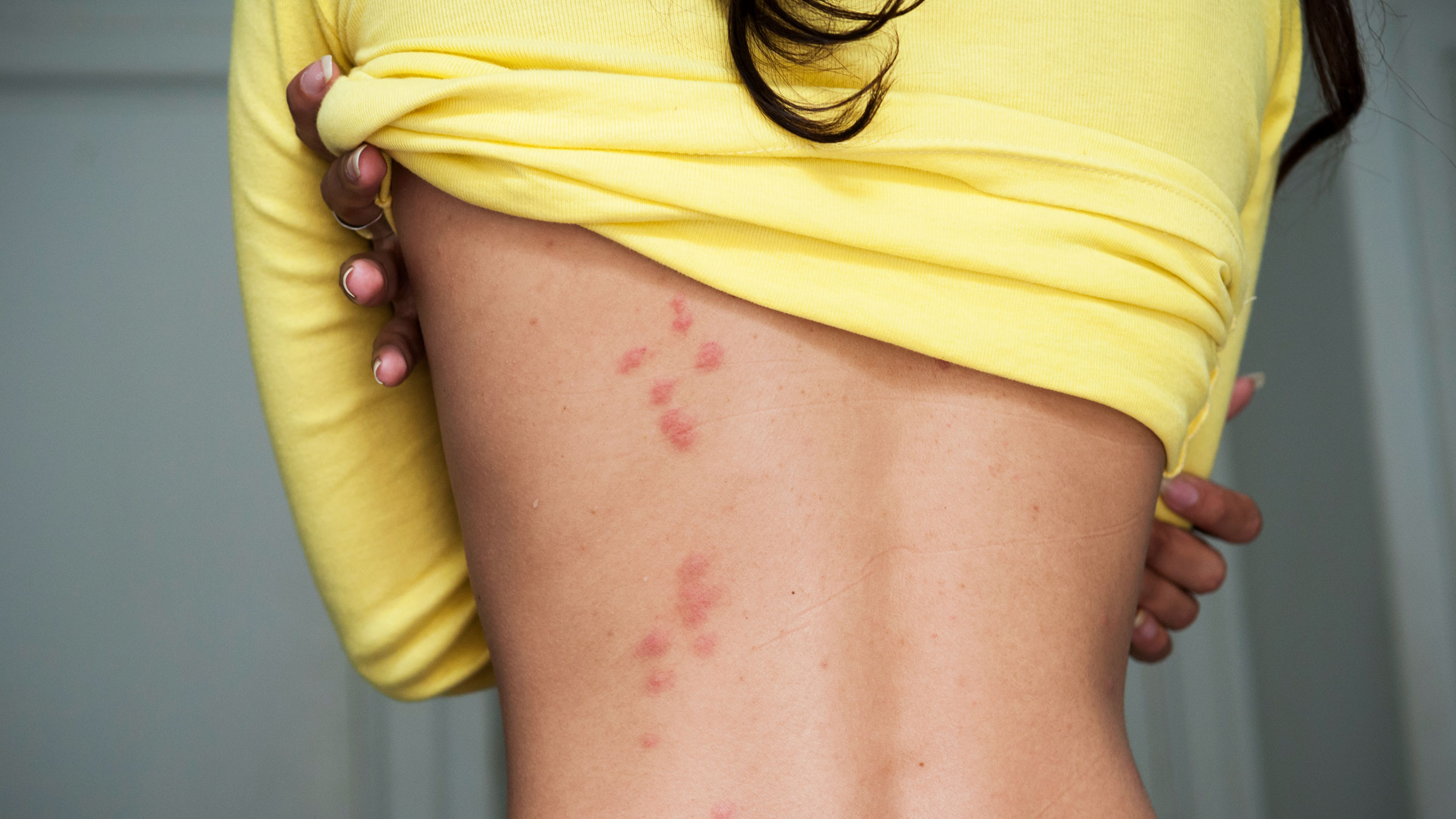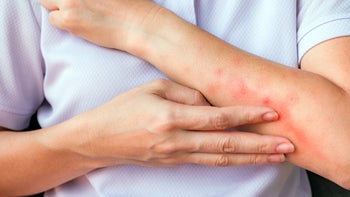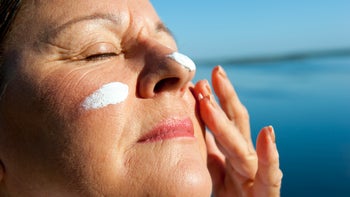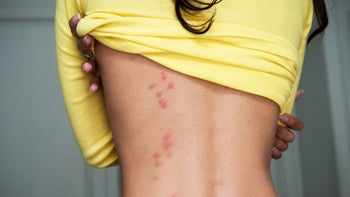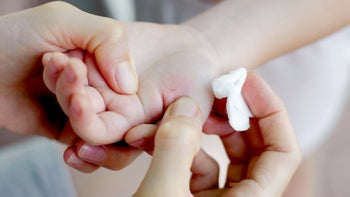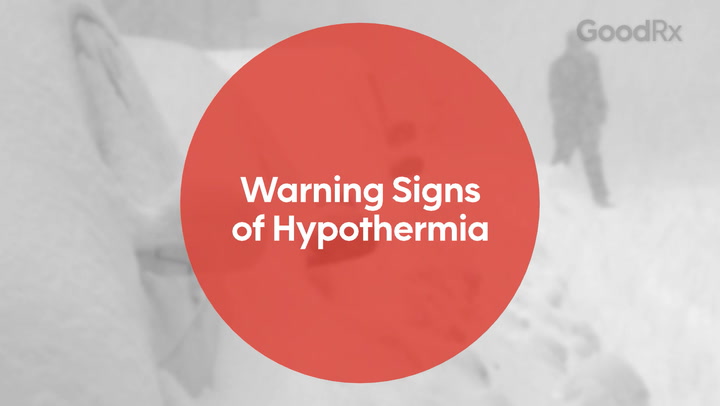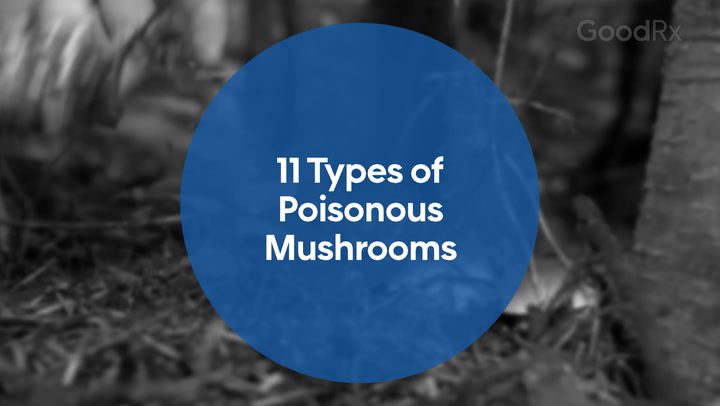
What to Do If You Get Stung by a Stingray
Key takeaways:
Stingray stings happen to thousands of people every year and can be very painful.
Stingrays have venomous sharp barbs, which can cause significant injury and even death.
If you get stung by a stingray, it’s best to get medical attention and treatment to avoid possible complications, like infection.

Stingrays live in coastal ocean waters and freshwater rivers all over the world. They’re on both the Pacific and Atlantic coasts in the U.S. Stingrays aren’t aggressive, in fact, they’re actually quite shy. But it can be easy to accidentally step on one and get stung by their whip-like tail. That’s because their flat bodies often blend in with their surroundings.
Many injuries from stingrays don’t get reported, but there are likely thousands of injuries every year. Although the sting can be very painful, most injuries resolve on their own. But there are possible complications, including stingray sting infections. So take a deep dive with us to learn the best ways to prevent and treat stingray stings.
How does a stingray sting?
Stingrays have tails with a barb or stinger (spinal blade) at the end. And there are rows of sharp spines on these stingers. These spines are strong and sharp enough that when a stingray strikes its tail, it can pierce your skin.
You may hear people say that they got a stingray “bite” — but that’s not quite accurate. Injuries usually happen on the feet, ankles, or lower legs when people accidentally step on top of a stingray. A strike from the barbed tail is what causes injuries. And this puncture wound can be quite painful.
But the really painful part comes from the venom that stingrays release. The cells under their spines have venom that can get from the wound into your blood. The severe pain comes from chemicals in the venom that stimulate pain receptors in your body. But scientists are still learning exactly how stingray venom affects the body.
The pain usually peaks in 90 minutes, but it can last anywhere from 6 to 48 hours or more. Pain is the most common symptom. In rare cases, the venom can cause a severe allergic reaction, like anaphylaxis, or other more serious symptoms.
What to do after you get stung by a stingray
Right after you get stung by a stingray, there are a few things you can do to help manage the pain and lessen the chances of infection. Like with other cuts or lacerations, it’s important to stop the bleeding. If the cut is deep, you may need to apply firm pressure.
Keep in mind that injuries on the neck, chest, or abdomen are more likely to cause serious complications and need emergency care. And it’s a good idea to get medical attention after any injury from an animal. But for injuries that aren’t life-threatening, here are some basic steps to stingray sting treatments.
Rinse the wound
After getting out of the water and to a safe place, do your best to rinse out and clean the wound. The ocean contains a lot of different bacteria, and a stingray puncture can introduce them into the wound. These bacteria can lead to serious infections.
Rinsing the wound can also help remove any debris, like sand. But remember that stingrays have spines, and pieces can get stuck in your skin. So be careful not to push them deeper into your body. Let the water run freely over the wound without scrubbing hard.
Look for fragments
Sometimes pieces of the stingray’s spine get stuck in the skin. It can be tempting to pull these out by yourself. But it’s best to have a trained professional remove fragments — especially if the pieces go past the surface of your skin and into muscle. Plus, it can be easy to accidentally injure your hand on the sharp pieces. This is why it’s important to use protection or a tool, like tweezers, to help prevent hand injuries.
Soak the injured area in hot water
Some experts recommend soaking the injured area in warm to hot water for 60 to 90 minutes. This is because heat may inactivate stingray venom and lessen symptoms. But the water shouldn’t be so hot that it burns you. So make sure to test it before you soak the injured body part.
In a very small study, soaking in hot water also helped relieve pain. But more research is needed to say whether hot water therapy is an effective treatment for stingray stings.
WHAT TO READ NEXT
Popular stories this week
Are stingrays dangerous?
Stingrays aren’t aggressive creatures, but their stings can be dangerous and even deadly. Death from a sting is rare and is more likely when there’s an injury to a large blood vessel or an organ, like the heart, lung, or bowel. For example, Steve Irwin, the famed wildlife personality, died of cardiac arrest after a stingray injury to the chest.
Stings in freshwater are also more likely to cause complications than stings in the ocean. That’s because freshwater stingrays have more venom-containing cells.
Beyond intense pain, stingray venom can also rarely cause systemic symptoms like:
Headache
Nausea
Vomiting
Fainting
Low blood pressure
Abnormal heart rhythms
Seizures
These are all signs that you should get medical attention quickly.
When to get emergency medical care
Stingray stings can lead to different problems, so it’s always best to get medical attention. This is especially important for stings to the head, neck, chest, or abdomen. Injuries to these areas may have other serious complications like bleeding or injury to vital organs. Any signs of a life-threatening allergic reaction after a sting — including difficulty breathing or collapse — need immediate medical care.
You may also need to get medical attention if there are pieces of the stingray's barb deep in your skin. Healthcare professionals can remove them in a safe and hygienic way. While there are no standard recommendations for imaging studies, sometimes you may have an X-ray to locate fragments.
And some stingray puncture wounds can be quite big and deep. A healthcare professional can help properly clean and close the wound if needed.
Tetanus infection is also possible and can be deadly. To prevent this complication, it’s important to get a tetanus shot or booster if you need one as soon as possible after being stung.
What to watch out for after a stingray sting
Infection is a big risk with stingray stings. And it can happen days after the injury. An infection can be the result of bacteria from the ocean that get into the wound or from pieces of the barb that get stuck in the skin.
Some healthcare professionals may prescribe preventive antibiotics after a stingray injury. This will likely depend on how severe the injury is and where it occurred. More research is needed to say when antibiotics for stingrays are most necessary.
Visit a healthcare professional if you notice any signs of infection, like:
Redness
Increased pain
Warmth
Swelling
Fevers
Fluid draining from the wound
How to prevent a stingray injury
Stingrays can be tough to avoid because they often hide under the sand and blend in with their surroundings. But there are some things you can do to reduce your risk. Here are some tips to stay safe in the water:
Wear protective gear and clothing, like a rashguard, wetsuit, and swim shoes.
Use a walking stick ahead of you when in the water.
Shuffle your feet in the sand, rather than lifting up and down.
Avoid swimming in areas where there are stingrays, and do not provoke them.
The bottom line
Stingray stings can be very painful. Although most people recover completely, stingray stings can sometimes cause serious infection and allergic reactions. If a stingray stings you, wash the wound and get medical care quickly. To stay safe in the water, wear protective gear and avoid swimming in areas with stingrays present.
References
American College of Emergency Physicians. (n.d.). Jellyfish and stingray stings.
Associated Press. (2006). ‘Crocodile hunter’ Steve Irwin killed by stingray. NBC News.
Baddour, L. M. (2022). Soft tissue infections following water exposure. UpToDate.
Barish, R. A., et al. (2022). Stingray stings. Merck Manual Professional Version.
Charnigo, A., et al. (2023). Stingray sting. StatPearls.
Diaz, J. H. (2008). The evaluation, management, and prevention of stingray injuries in travelers. Journal of Travel Medicine.
Jani, B. K., et al. (2019). Hazardous marine life: Stingray injury and its multimodal management. Journal of Marine Medical Society.
Kirchoff, K. N., et al. (2021). Stingray venom proteins: Mechanisms of action revealed using a novel network pharmacology approach. Marine Drugs.
Mekonnen, S. (n.d.). How to prevent and treat stingray injuries. Poison Control.
Meyer, P. K. (1997). Stingray injuries. Wilderness & Environmental Medicine.
Myatt, T., et al. (2018). A prospective study of stingray injury and envenomation outcomes. The Journal of Emergency Medicine.
Noonburg, G. E. (2005). Management of extremity trauma and related infections occurring in the aquatic environment. Journal of the American Academy of Orthopedic Surgery.
Parsons, K., et at. (2015). Stingray envenomation treatment recommendations. The Journal for Nurse Practitioners.
Stauffer, K., et al. (2024). Animal bites & stings (zoonotic exposures). CDC Yellow Book.


